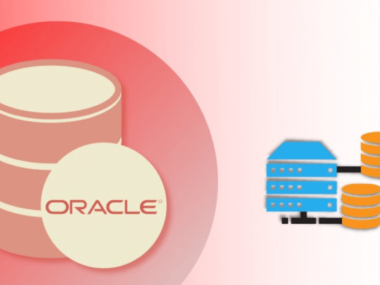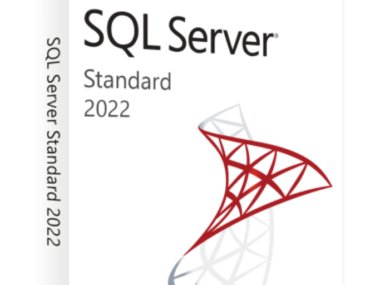Also Read
MongoDB is an open-source, NoSQL database that uses a document-oriented data model. It stores data in flexible, JSON-like documents, enabling efficient data storage and retrieval.
MongoDB is a robust solution for managing voluminous data. It offers fast performance, high availability, and easy scalability.
It is a popular choice for developing modern applications. This is because of its dynamic schemas. They allow you to store records without predefining the structure.
The database features full index support. It also has rich query languages and aggregations. This optimizes data manipulation and analysis.
MongoDB is platform-agnostic. You can deploy it on various operating systems. It readily integrates with many development stacks.
This versatility allows developers to build applications. The applications can evolve with changing business requirements. It makes MongoDB a vital tool in modern software development.

Understanding MongoDB: A Brief Introduction
Step into the world of MongoDB. It’s a database solution that challenges the traditional approach to data management. The digital landscape is expanding. The amount of data generated every second is colossal.
This creates a need for highly flexible, scalable databases. They must handle diverse data types with ease.
MongoDB emerges as a front-runner in this field. It offers a unique take on data storage. This departs from the table-based format you might be more familiar with. Here’s a closer look at this compelling database platform.
Definition And Evolution Of MongoDB
MongoDB is a powerful, open-source NoSQL database that uses a document-oriented data model. This means it stores data in JSON-like documents. These documents can vary in structure, offering a dynamic, flexible schema.
The name “MongoDB” comes from the word “humongous.” This signifies the database’s ability to handle massive amounts of data.
The creators of MongoDB developed it in 2009. Since then, the team has improved MongoDB. It now meets the needs of modern application developers.
A company called 10gen developed it and later rebranded as MongoDB Inc. Over the years, MongoDB has introduced features. These include full-text search and data analytics. It has also added real-time aggregation. These changes help MongoDB stay on the cutting edge of database technology.
Why MongoDB Is Gaining Popularity
Several key factors have contributed to MongoDB’s rising popularity.
-
MongoDB’s document model allows developers to store data in a way that aligns with their application’s structure. Unlike traditional relational databases, it’s flexible. This makes the development process more intuitive and streamlined.
-
MongoDB excels in horizontal scalability. This lets it accommodate enormous amounts of data and user load. It uses a distributed architecture that can spread across multiple servers.
-
Speed: Its indexing features enable quick data retrieval. Each entity’s data is often stored in a single document. Performance is often faster than that of relational databases.
-
Agile Development: Agile Development: MongoDB doesn’t have a predefined schema. This allows agile teams to iterate rapidly. They can update the data model without having to migrate the entire database.
-
Rich Query Language: MongoDB supports a rich set of querying capabilities. This makes it possible to query the data in sophisticated ways. These capabilities can be equivalent to SQL joins.
-
Strong Community and Ecosystem: MongoDB’s extensive support network benefits from a strong community and ecosystem. They contribute to it through robust community and thriving ecosystem. It includes commercial support, training, and an array of third-party tools.
By combining these advantages, MongoDB delivers a high-performance environment. It is adaptable and developer-friendly, suited for modern, data-driven applications.
MongoDB demonstrates its capacity to revolutionize data handling in diverse use cases. It stands out as a critical tool in the database market. Use cases range from IoT to content management, e-commerce to real-time analytics.
Exploring MongoDB’s Fundamental Features
Databases have evolved to meet modern application demands. MongoDB is a powerful, document-oriented database. The design allows for easy storage, management, and retrieval of large volumes of data.
In this section, we’ll explore the fundamental features that make MongoDB a go-to choice for developers. They aim for performance, flexibility, and scalability in their database solutions.
MongoDB is schema-less. It has robust querying capabilities. MongoDB offers a suite of features. These features deliver a seamless data management experience.
Schema-less Data Modeling
MongoDB’s schema-less architecture provides a dynamic environment for data storage. Unlike traditional databases, MongoDB does not require predefined schemas. You can work with documents without defining the structure beforehand.
This makes it particularly adaptable to changes and varied data forms. The JSON-like format, known as BSON, enables the storage of complex hierarchies, arrays, and nested documents. It offers high-level flexibility in representing data relationships.
High Performance And Scalability
Performance is paramount in application design. MongoDB shines with its ability to handle large data sets with impressive speed. The database’s architecture fosters efficient reads and writes, bolstering application responsiveness.
To scale with the growing data, MongoDB offers horizontal scalability through sharding. It distributes data across multiple machines to balance the load and maintain performance.
Such features ensure that MongoDB can meet high-performance demands. They also support growth without compromising speed.
Robust Query Language
Finding the right data quickly is critical. This need is met by MongoDB’s powerful query language. MongoDB supports a rich set of query operations. It ranges from simple lookups to complex aggregations.
You can filter and sort data. You can perform full-text searches. You can even use geospatial queries. This extensive querying capability makes it easy to extract meaningful insights from your data. It delivers a robust toolkit for developers to interact with the database.
Flexible And Expressive Indexing Options
When it comes to data retrieval, indexing is a vital aspect of database performance. MongoDB provides a variety of indexing options to optimize query performance.
You can define indexes on any field within a document. This includes fields within arrays and nested documents. MongoDB supports single field, compound, multikey, and even full-text indexes.
This flexibility allows you to fine-tune your indexing strategy. It suits specific query patterns and makes data retrieval more efficient. It tailors to your application needs.
Delving Into The Internal Architecture Of MongoDB

Credit: www.barielle.com
Delving into the Internal Architecture of MongoDB reveals a compelling framework. It’s designed for high performance, high availability, and scalability.
MongoDB is a document-based NoSQL database. The tech community has noticed it for its agile and flexible approach to storing and retrieving data.
In this exploration, we peel back the layers of MongoDB to better understand the intricacies of its internal mechanics. We’ll also shed light on how it deftly handles vast datasets and complex operations.
Core Components: Understanding Storage, Querying, And Replication
At the heart of MongoDB lies a trio of pivotal components: storage, querying, and replication. These foundations enable MongoDB to offer robust performance and reliability:
-
Storage: MongoDB employs a powerful storage engine that supports WiredTiger by default. This storage mechanism enables compression, allowing for efficient use of space. It also has fine-grained concurrency control. This translates to heightened throughput for write-heavy applications.
-
Querying: Agility in data retrieval is achieved through MongoDB’s dynamic querying system. With support for rich queries, indexing, and real-time aggregation, users can fetch data with precision and speed.
-
Replication: MongoDB ensures data availability through its built-in replication feature. This mechanism allows data to be duplicated across multiple nodes. It secures against hardware failures and contributes to data redundancy and fault tolerance.
In the realm of databases, horizontal scaling is often the cornerstone for handling expansive data growth.
MongoDB addresses this challenge through sharding. Sharding distributes data across a cluster of machines.
The sharding process involves breaking up large datasets into smaller, more manageable chunks. These smaller chunks are called ‘shards.” This allows MongoDB to effectively scale out across commodity hardware.
By dispersing operations across numerous shards, the load is balanced. This greatly enhances the application’s capacity to read and write data. It does not compromise performance.
Acid Properties And Cap Theorem In MongoDB
MongoDB’s architecture is designed to balance consistency, availability, and partition tolerance. It adheres to the principles outlined in the CAP Theorem.
However, multi-document ACID transactions were introduced in MongoDB. It now also supports strong consistency, offering the best of both worlds.
| Property | Description |
|---|---|
| Atomicity | Ensures that all operations within a transaction are completed successfully, or none are applied. |
| Consistency | Guarantees that database constraints are maintained throughout transactions. |
| Isolation | Provides transaction isolation and controls concurrency effectively. |
| Durability | Ensures that once a transaction is committed, it remains so, even in the event of a system failure. |
MongoDB’s embrace of ACID properties, in conjunction with its flexible schema and document model, secures its place as a versatile database capable of supporting transactional workloads.
Unraveling MongoDB’s Competitive Edge
The digital landscape is evolving at an unprecedented rate. Databases like MongoDB are becoming the backbone of modern applications.
The high-performance, flexible, and scalable document-oriented database model makes MongoDB well-known. It offers a compelling alternative to traditional relational database systems.
The dynamic schema provides agility. It’s easy to integrate and has powerful querying capabilities. They can build, iterate, and manage their applications.
Let’s delve deeper into MongoDB’s strengths. We’ll understand why it stands out. It’s in the competitive world of database management systems.
Real-world Applications And Use Cases
MongoDB shines in scenarios where speed and scalability are of the essence. Here are some popular applications:
- Content Management and Delivery
- Mobile and Social Infrastructure
- User Data Management
- Data Hub
Companies use MongoDB’s flexibility in e-commerce platforms. Storing and retrieving diverse customer data is critical.
In gaming, it can handle high volumes of read and write operations. This ensures seamless player experiences.
For IoT applications, MongoDB’s flexible schema can accommodate various sensor data types.
Comparison With Traditional SQL Databases
When compared to SQL databases, MongoDB offers a more agile data model. Differences in structure lead to distinct advantages.
| Feature | MongoDB | SQL Database |
|---|---|---|
| Schema | Dynamic | Fixed |
| Querying | Rich JSON-based queries | Structured Query Language |
| Scaling | Horizontal scaling with sharding | Vertical scaling |
The fixed schema of traditional databases often leads to complex updates. In contrast, MongoDB’s document model accommodates changes. Such flexibility empowers businesses to adapt to changing requirements.
Benefits And Limitations of MongoDB
MongoDB’s advantage lies in its diverse set of features, tailored for modern database needs:
- Flexibility: No need for predefined schema
- Scalability: Efficient horizontal scaling
- Speed: High-performance data processing
- Development: Simplified codebase with JSON-like documents
- Join operations are less efficient than in SQL.
- Transactional support is limited compared to traditional databases.
- Memory usage can be high for large data sets.
Despite these limitations, MongoDB can handle large-scale, unstructured data. This makes it a strong solution for various applications.
Organizations can tap into its full potential for innovative data management. They can do this by carefully weighing both benefits and drawbacks.
Securing And Optimizing MongoDB Deployment
Deploying a MongoDB database involves more than setting it up. You must also start storing data. Organizations must prioritize security. They must also optimize performance to truly leverage MongoDB’s power and flexibility.
A secure and well-optimized MongoDB deployment ensures data integrity. It also provides high availability and efficient resource usage. Below are the key strategies to secure and optimize your MongoDB deployment. They focus on best practices. They also measure to improve the resilience and speed of your database.
Best Practices For Security And Access Control
Securing a MongoDB database starts with implementing robust security and access controls. Here are some vital practices to consider:
- Authentication: Enable authentication to ensure only authorized users can access the database. Use mechanisms like
SCRAM-SHA-256for secure authentication. - Authorization: Apply the principle of least privilege by assigning roles that limit user actions based on their job requirements.
- Encryption: Protect data at rest with encrypted storage engines and use TLS/SSL to encrypt data in transit.
- Auditing: Use MongoDB’s auditing feature to track access and changes, which can help identify potential security breaches or unauthorized activities.
- Firewall: Configure firewalls to restrict access to the MongoDB server, allowing only trusted hosts to connect.
Performance Optimization Strategies
Optimizing performance is crucial for a smooth and efficient MongoDB experience. Implement the following strategies to boost your database’s performance:
- Indexing: Create indexes to improve query performance, but avoid over-indexing as it can lead to unnecessary storage and performance overhead.
- Sharding: Distribute data across multiple servers using sharding for horizontal scalability and reducing bottlenecks.
- Resource Management: Allocate adequate resources (CPU, memory, I/O capacity) and use connection pooling to handle traffic spikes.
- Query Optimization: Analyze query patterns and optimize them using
Explainfor faster response times.
Data Backup And Disaster Recovery Measures
Regular backups and a solid disaster recovery plan are essential for any MongoDB deployment. Implement these measures to safeguard your data:
| Backup Type | Description | Frequency |
|---|---|---|
| Full Backup | Complete copy of the database at a specific point in time. | Daily or Weekly |
| Incremental Backup | Backup of only the changes since the last backup. | Hourly or As decided by data change volume |
| Point-in-Time Recovery | Capability to restore the database to a specific moment using oplog replay. | As needed |
- Utilize MongoDB tools like
mongodumpandmongorestoreor cloud provider solutions for regular backups. - Ensure backups are stored in a secure, offsite location to protect against site-specific disasters.
- Test your recovery process periodically to confirm that backups can be restored successfully and promptly.
Frequently Asked Questions About the MongoDB Database?
What Is MongoDB And Its Uses?
MongoDB is a NoSQL database known for its flexibility and scalability. It stores data in JSON-like documents, supporting varied data structures. It’s used for large data sets and real-time applications.
How Does MongoDB Store Data?
MongoDB stores data in BSON documents, which are binary representations of JSON-like structures. accommodating a variety of data types and structures.
What Are MongoDB’s Main Features?
MongoDB has key features. These include its flexible schema and scalability with sharding. It also offers replication for high availability and strong querying capabilities. These make it ideal for managing large-scale data.
Is MongoDB Suitable For Large Applications?
Yes, MongoDB designers have designed it to be scalable. It’s also capable of handling large applications. Its distributed architecture and sharding capabilities support expansive datasets and high user loads.
Conclusion
Understanding MongoDB vitalizes modern database management and application development. Its dynamic schema, scalability, and powerful querying capabilities enable robust, flexible data handling.
Embracing MongoDB can revolutionize how businesses store, manage, and retrieve their data. Dive in, and watch your projects thrive with this innovative technology.













1 comment